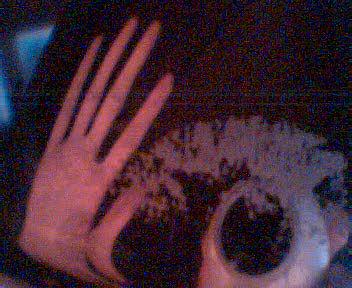Week 1
- Practical 1 - Audio Arts - What is Sound Design [1]
- Practical 2 - Creative Computing - Scheduling [2]
Here is my code:
// Week 1 Scheduling
// Wirt's Leg
(
SynthDef(\WirtsLeg,
{
// Arguments
arg note = 60,
amp = 0.3,
out = 0,
pan = 0.0
;
// Variables
var freq,
gen,
env
;
// Frequency
freq = note.midicps;
// Envelope
env = EnvGen.ar(
envelope: Env(
levels: [0,0.7,1,0], // Amplitude
times: [0.001, 0.01, 0.01]), // Duration
levelScale: amp,
doneAction: 2
);
// Gen
gen = SinOsc.ar(
freq: freq *2,
mul: amp
);
//Output
Out.ar(
bus: out,
channelsArray: Pan2.ar(
in: gen * env,
pos: Rand(-1.0,1.0)
)
);
}).load(s);
// Tomb
SynthDef(\Tomb,
{
// Arguments
arg note = 60,
amp = 0.3,
out = 0,
pan = 0.0
;
// Variables
var freq,
gen,
env
;
// Frequency
freq = note.midicps;
// Envelope
env = EnvGen.ar(
envelope: Env(
levels: [0,0.7,1,0], // Amplitude
times: [0.001, 0.01, 0.01]), // Duration
levelScale: amp,
doneAction: 2
);
// Gen
gen = SinOsc.ar(
freq: freq *2,
mul: amp
);
//Output
Out.ar(
bus: out,
channelsArray: Pan2.ar(
in: gen * env,
pos: Rand(-0.4,0.4)
)
);
}).load(s);
// Cube
SynthDef(\Cube,
{
// Arguments
arg freq = 60,
amp = 0.3,
out = 0,
pan = 0.0
;
// Variables
var gen,
env
;
// Envelope
env = EnvGen.ar(
envelope: Env(
levels: [0,0.7,1,0], // Amplitude
times: [2, 3, 5]), // Duration
levelScale: amp,
doneAction: 2
);
// Gen
gen = SinOsc.ar(
freq: freq,
mul: amp
);
//Output
Out.ar(
bus: out,
channelsArray: Pan2.ar(
in: gen * env,
pos: Rand(-1.0,1.0)
)
);
}).load(s);
)
// Sequencer
(
a = TempoClock(2);
b = TempoClock(0.5);
c = TempoClock(1);
a.schedAbs(
0.0,
{
arg cnt;
cnt.postln;
Synth(\WirtsLeg, [
\note, rrand(20,40),
\amp, 0.3.rand2
]);
1 // Resolution
});
b.schedAbs(
0.0,
{
arg cnt;
cnt.postln;
Synth(\Tomb, [
\note, rrand(80,85),
\amp, 0.3.rand2
]);
1 // Resolution
});
c.schedAbs(
0.0,
{
arg cnt;
cnt.postln;
Synth(\Cube, [
\freq, rrand(100, 400)]);
1.1 // Resolution
});
b.schedAbs(15, { b.tempo = rrand(1.5, 2.5); nil });
b.schedAbs(140, { a.tempo = 40;
Synth(\Tomb, [
\note, rrand(30, 34)]);
1 });
b.schedAbs(160, { b.clear; });
c.schedAbs(11, {c.tempo = 0.1; nil });
c.schedAbs(14.3, {c.tempo = 1; nil});
c.schedAbs(25.3, {c.tempo = 0.1; nil});
c.schedAbs(29.7, {c.clear; });
a.schedAbs(30, { a.tempo = 7; nil });
a.schedAbs(250, { Synth(\WirtsLeg, [
\note, rrand(20, 90)]); 1 });
a.sched(500, { a.clear; });
)
- Music Technology Forum - Presentation - Martin Armiger: The Problem with Film Music [3]
Martin Armiger took the stand today and talked about the “problem with film music”. I also went to his 6 hour workshop at Flinders Uni so I may talk about things he mentioned at the workshop too. A lot of the presentation wasn’t specifically about the problems, but more so about film music and his experiences writing it. The two points he mentioned that made the biggest impact on me were 1) expressing emotion through music, and 2) learning through doing. His point with 1) was that to create film music, you must be able to become musically emotional. After thinking about this it has made me realise that my inability to do this in a particular way has a lot to do with my discontent as a composer over the last couple of years. The second point simply illustrated to me the different styles of teaching found at a university and a school such as AFTRS. He finished of with some AFTRS promotion, and told us about the possible courses that may run in Adelaide next year. After seeing the recent AFTRS film screening at the Mercury cinema, I am definitely considering an audition for here or Sydney.
- References
- [1] Haines, Christian. 2006. Practical on Sound Design. University of Adelaide, 25 July.
- [2] Haines, Christian. 2006. Lecture on Supercollider . University of Adelaide, 27 July.
- [3] Armiger, Martin. 2006. Presentation on "The problem with Film Music". University of Adelaide, 27 July.


0 Comments:
Post a Comment
<< Home